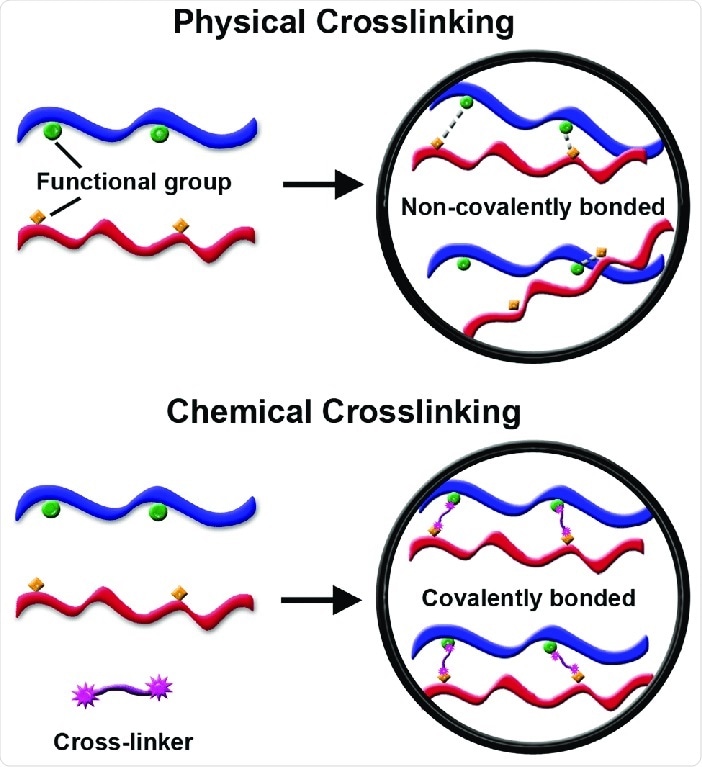The mechanism for protein function can be unraveled by defining protein dynamics. A structural biology technology—chemical crosslinking coupled with highly sensitive mass spectrometry (CXMS)—was developed in the past decade.

Image Credit: https://www.researchgate.net/figure/Graphical-representation-of-physical-and-chemical-crosslinking-illustrating-the-type-of_fig2_332522033
The distance data between certain amino acids found in protein can be acquired by crosslinking.
CXMS has excellent sensitivity and has no restriction on the molecular weight of the protein system, and as a result, it is turning out to be more popular.
CXMS distance restraints are often used on Cα or Cβ atoms of the crosslinked residues, with upper bounds over 20Å. When loose CXMS restraints are incorporated, they enhance the resolution of the computed structures only marginally.
A team of researchers, headed by Dr TANG Chun from Innovation Academy for Precision Measurement Science and Technology, Chinese Academy of Sciences, has now created a new technique to investigate the dynamics and structure of proteins based on CXMS. The study results were published in the Structure journal on August 6th, 2020.
The researchers compared and examined the published CXMS experimental data. Taking a cue from nuclear magnetic resonance, the team created a novel technique of applying the Cω atom as the distance restraint point.
With the flexible side-chain represented clearly, the reformatted restraint can instead be used on the modification group, with an upper bound of 6Å or less. The application of the new type of restraints offers structures that are resolved more thoroughly and also reveals the dynamics of proteins.
The researchers are mainly interested in creating new techniques for defining biomolecular dynamics.
The team has published many articles on the computational analysis of CXMS data, which comprise the development of CXMS calculation techniques to investigate the dynamic structures of protein complexes—modeling the protein excited-state structures from “over-length” chemical crosslinks and designing the novel technique that combines CXMS, single-molecule FRET data, as well as small-angle X-ray scattering.
In the recent past, the team has also methodically defined the distribution properties of the crosslinking distance, and suggested a more precise crosslinking distance distribution model.
Source:
Journal reference:
Gong, Z., et al. (2020) Tightening the Crosslinking Distance Restraints for Better Resolution of Protein Structure and Dynamics. Structure. doi.org/10.1016/j.str.2020.07.010.